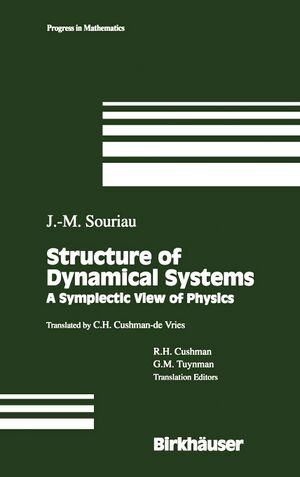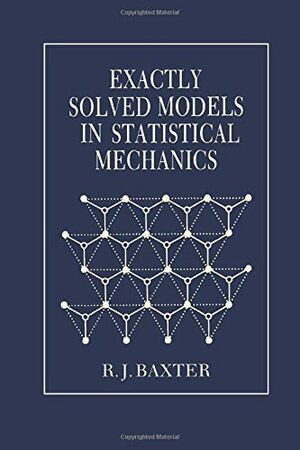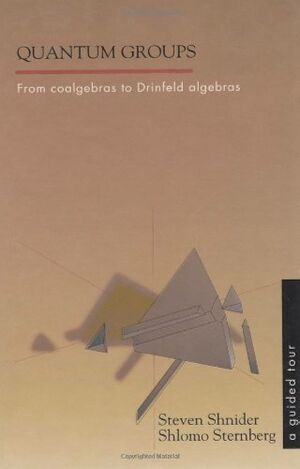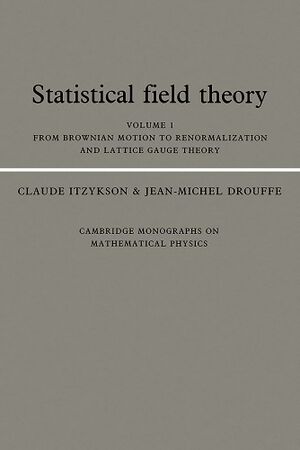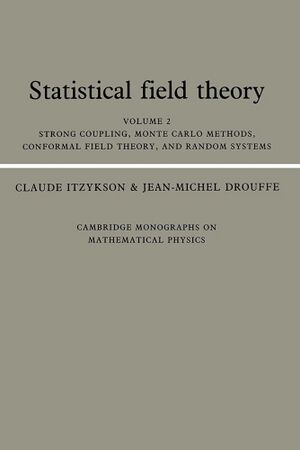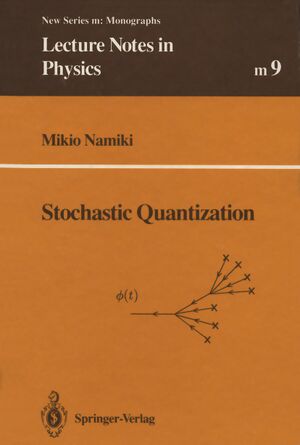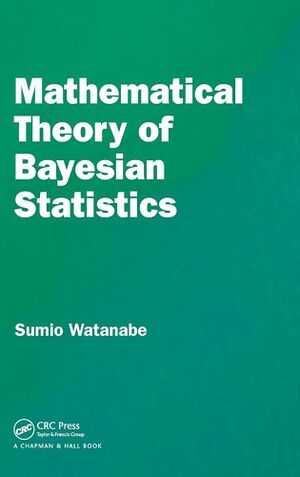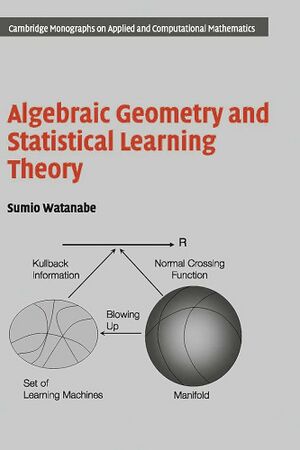Statistical Physics (Book): Difference between revisions
(references/application books added) |
No edit summary |
||
| (6 intermediate revisions by 2 users not shown) | |||
| Line 1: | Line 1: | ||
{{InfoboxBook | {{InfoboxBook | ||
|title= | |title=Statistical Physics | ||
|image=[[File:Landau statistical physics.jpg]] | |image=[[File:Landau statistical physics.jpg]] | ||
|author=[https://en.wikipedia.org/wiki/Lev_Landau Lev Landau] | |author=[https://en.wikipedia.org/wiki/Lev_Landau Lev Landau] | ||
| Line 12: | Line 12: | ||
}} | }} | ||
Statistical physics is commonly introduced in physics education as the physics of thermodynamics in gases and solids. This is wrong. Firstly, the standard courses neglect what Landau does, deriving the macroscopic concepts from probabilistic (but ultimately deterministic) microscopic motion. Souriau takes this further. Statistical mechanics like classical mechanics is based on symplectic geometry, but with the added ingredient of measures. This geometric approach to statistical mechanics leads us eventually to statistical field theory and stochastic quantization with lattice statistical mechanics as a stepping stone to the continuum limit - this makes the connection to quantum field theory manifest. Statistical field theory and stochastic quantization were first coined and motivated by Parisi, who started to make the analogies between e.g. statistical correlation functions and quantum field theory propagators rigorous. | {{NavContainerFlex | ||
|content= | |||
{{NavButton|link=[[Read#Landau|Read]]}} | |||
{{NavButton|link=[[Statistical Mechanics]]}} | |||
}} | |||
Statistical physics is commonly introduced in physics education as the physics of thermodynamics in gases and solids. This is wrong. Firstly, the standard courses neglect what Landau does, deriving the macroscopic concepts from probabilistic (but ultimately deterministic) microscopic motion. There are also numerous other applications of the subject from chemistry to crystals to phase transitions. Souriau takes this further. Statistical mechanics like classical mechanics is based on symplectic geometry, but with the added ingredient of measures. This geometric approach to statistical mechanics leads us eventually to statistical field theory and stochastic quantization with lattice statistical mechanics as a stepping stone to the continuum limit - this makes the connection to quantum field theory manifest. Statistical field theory and stochastic quantization were first coined and motivated by Parisi, who started to make the analogies between e.g. statistical correlation functions and quantum field theory propagators rigorous. | |||
From the physics, other genuinely new types of mathematical objects appear: | From the physics, other genuinely new types of mathematical objects appear: | ||
| Line 18: | Line 24: | ||
* continuous random processes | * continuous random processes | ||
* statistical learning (to be elaborated on in the future) | * statistical learning (to be elaborated on in the future) | ||
Understanding the fundamentals of statistical mechanics and its geometric consequences may lead directly to an understanding of complex phenomena at all scales - from weather to neuronal cognition. | |||
=== Applications === | === Applications === | ||
| Line 48: | Line 56: | ||
| cover = Itzykson drouffe statfields2 cover.jpg | | cover = Itzykson drouffe statfields2 cover.jpg | ||
| link = Statistical Field Theory (Book Series) | | link = Statistical Field Theory (Book Series) | ||
| title = === Statistical Field Theory Volume | | title = === Statistical Field Theory Volume 2 === | ||
| desc = Statistical Field Theory Volume 2: Strong Coupling, Monete Carlo Methods, Conformal Field Theory, and Random Systems by Claude Itzykson and Jean-Michel Drouffe. | | desc = Statistical Field Theory Volume 2: Strong Coupling, Monete Carlo Methods, Conformal Field Theory, and Random Systems by Claude Itzykson and Jean-Michel Drouffe. | ||
}} | }} | ||
| Line 57: | Line 65: | ||
| desc = Stochastic Quantization by Mikio Namiki | | desc = Stochastic Quantization by Mikio Namiki | ||
}} | }} | ||
{{BookListing | |||
| cover = Watanabe bayesian cover.jpg | |||
| link = Mathematical Theory of Bayesian Statistics (Book) | |||
| title = === Mathematical Theory of Bayesian Statistics === | |||
| desc = Mathematical Theory of Bayesian Statistics by Sumio Watanabe | |||
}} | |||
{{BookListing | |||
| cover = Watanabe alg learning cover.jpg | |||
| link = Algebraic Geometry and Statistical Learning Theory (Book) | |||
| title = === Algebraic Geometry and Statistical Learning Theory === | |||
| desc = Algebraic Geometry and Statistical Learning Theory by Sumio Watanabe | |||
}} | |||
</div> | </div> | ||
[[Category:Books]] | |||
Latest revision as of 21:57, 30 July 2025
| Statistical Physics | |
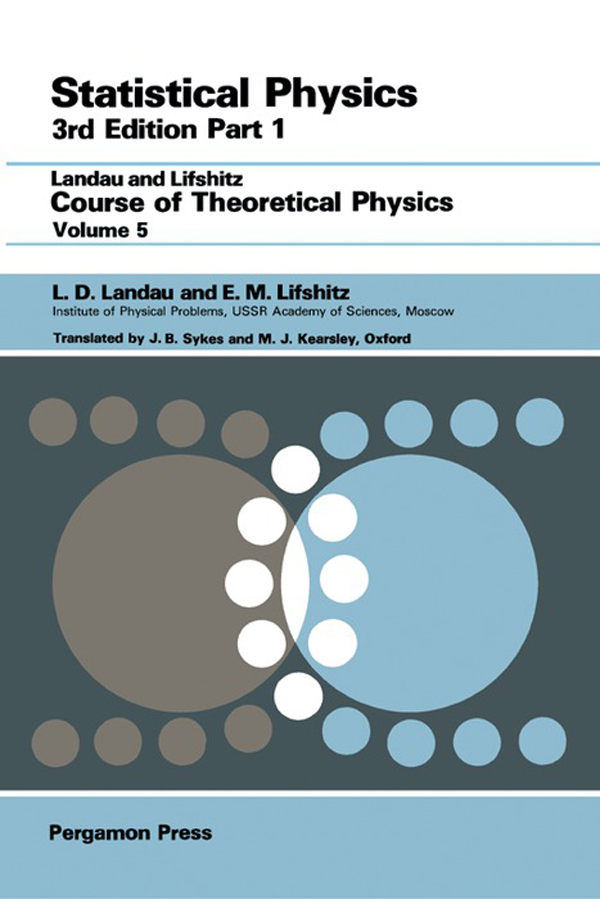
| |
| Information | |
|---|---|
| Author | Lev Landau |
| Language | English |
| Series | Course of Theoretical Physics |
| Publisher | Butterworth Heinemann |
| Publication Date | 1982 |
| Pages | 564 |
| ISBN-13 | 978-0-08-057046-4 |
Statistical physics is commonly introduced in physics education as the physics of thermodynamics in gases and solids. This is wrong. Firstly, the standard courses neglect what Landau does, deriving the macroscopic concepts from probabilistic (but ultimately deterministic) microscopic motion. There are also numerous other applications of the subject from chemistry to crystals to phase transitions. Souriau takes this further. Statistical mechanics like classical mechanics is based on symplectic geometry, but with the added ingredient of measures. This geometric approach to statistical mechanics leads us eventually to statistical field theory and stochastic quantization with lattice statistical mechanics as a stepping stone to the continuum limit - this makes the connection to quantum field theory manifest. Statistical field theory and stochastic quantization were first coined and motivated by Parisi, who started to make the analogies between e.g. statistical correlation functions and quantum field theory propagators rigorous.
From the physics, other genuinely new types of mathematical objects appear:
- scale symmetry/renormalization and critical phenomena
- continuous random processes
- statistical learning (to be elaborated on in the future)
Understanding the fundamentals of statistical mechanics and its geometric consequences may lead directly to an understanding of complex phenomena at all scales - from weather to neuronal cognition.
Applications[edit]
Structure of dynamical systems: a Symplectic View of Physics
Structure of dynamical systems: a Symplectic View of Physics by Jean-Marie Souriau.
Exactly Solved Models In Statistical Mechanics
Exactly Solved Models In Statistical Mechanics by Rodney Baxter.
Quantum Groups: From Coalgebras to Drinfeld Algebras
Quantum Groups: From Coalgebras to Drinfeld Algebras by Shlomo Sternberg and Steven Shnider.
Statistical Field Theory Volume 1
Statistical Field Theory Volume 1: From Brownian Motion to Renormalization and Lattice Gauge Theory by Claude Itzykson and Jean-Michel Drouffe.
Statistical Field Theory Volume 2
Statistical Field Theory Volume 2: Strong Coupling, Monete Carlo Methods, Conformal Field Theory, and Random Systems by Claude Itzykson and Jean-Michel Drouffe.
Mathematical Theory of Bayesian Statistics
Mathematical Theory of Bayesian Statistics by Sumio Watanabe

